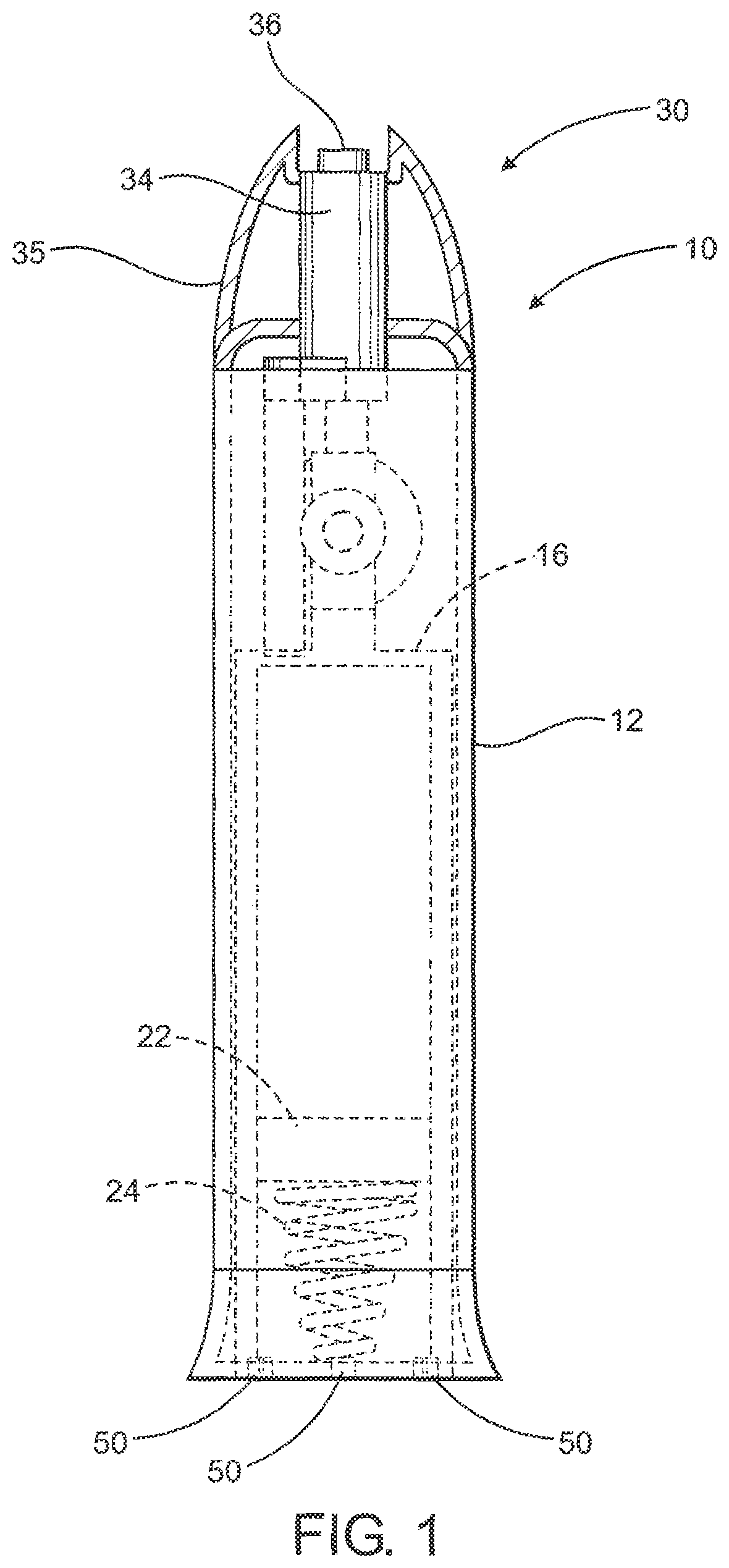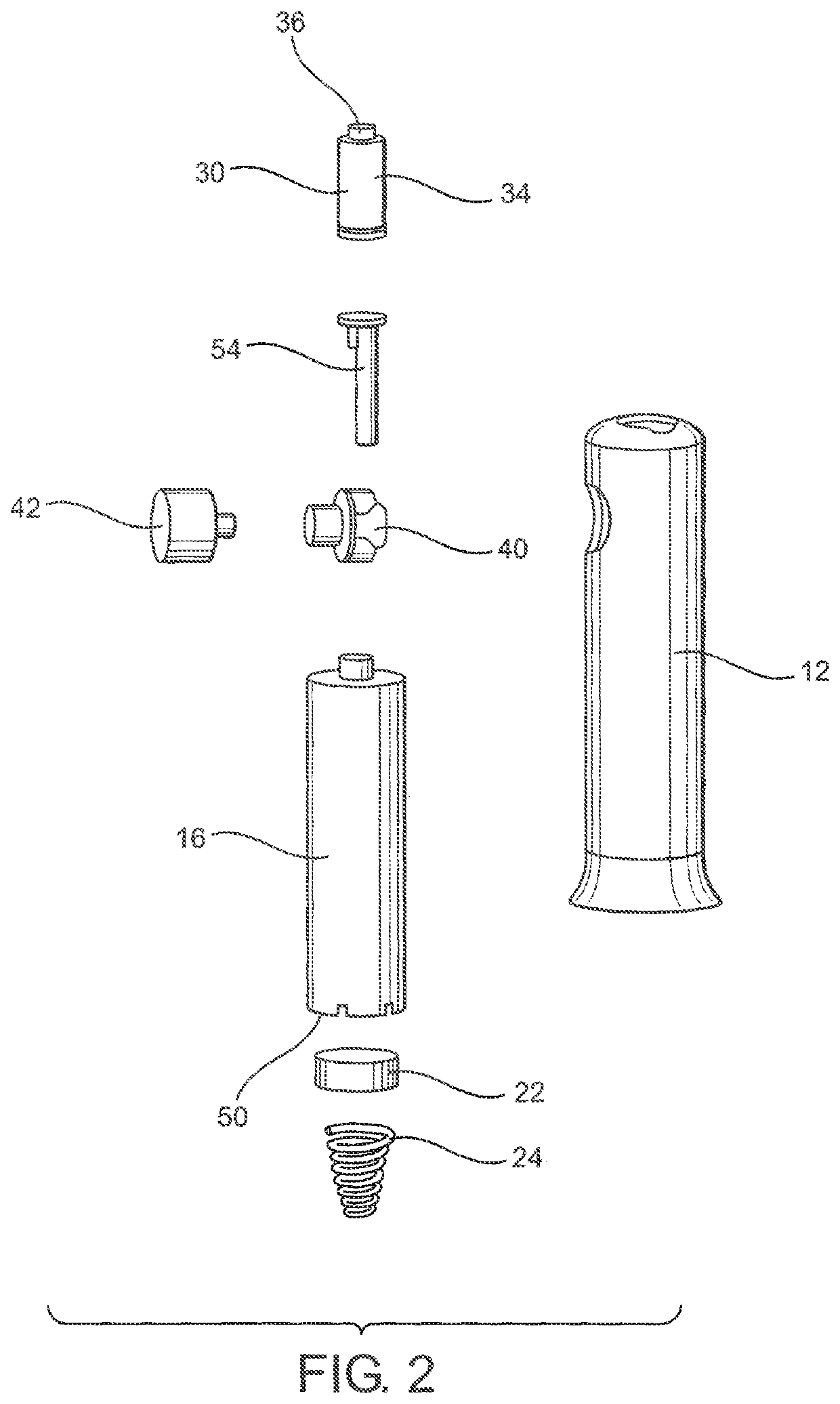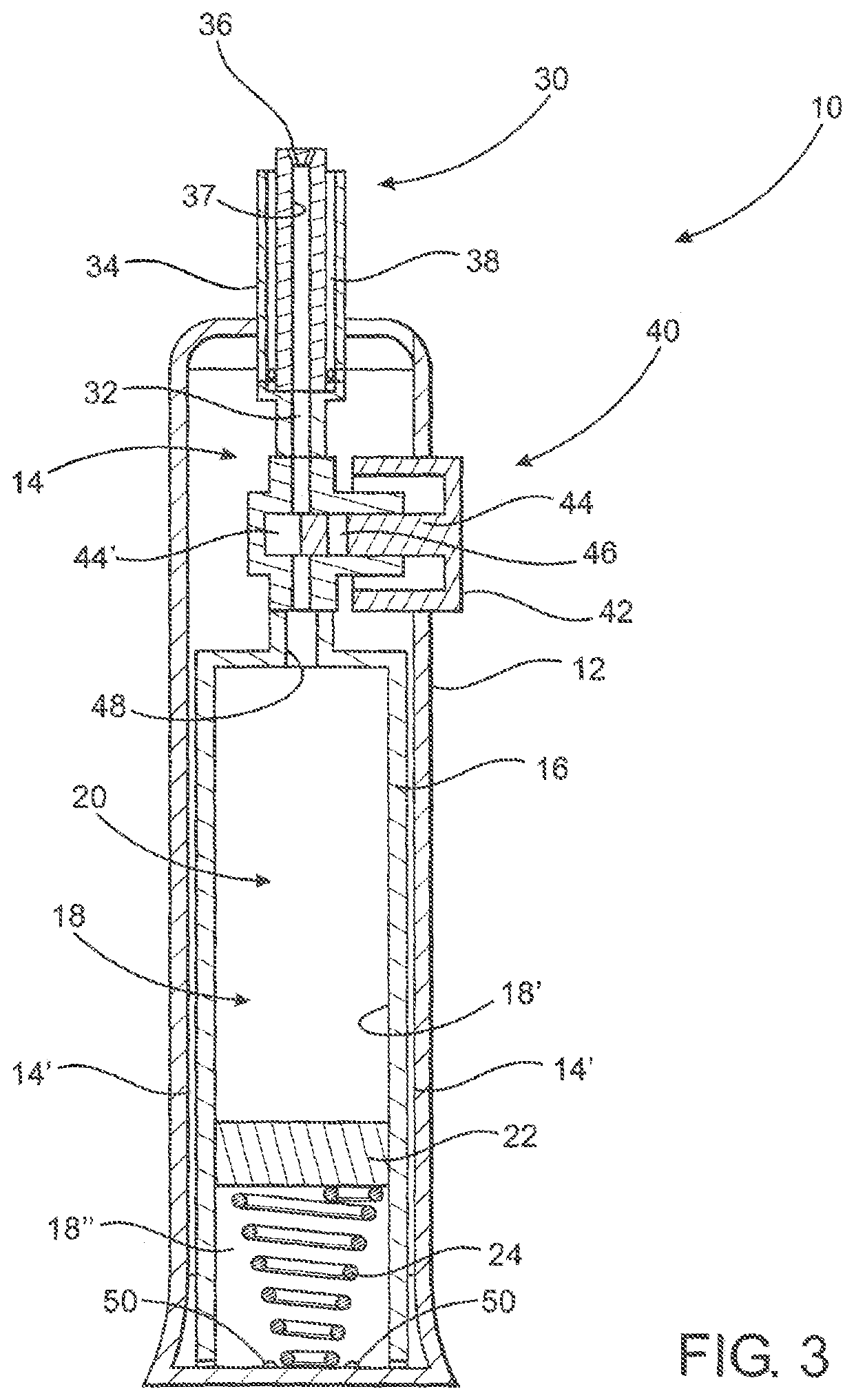Irrigation assembly
a technology of irrigation and assembly, which is applied in the field of irrigation assembly, can solve the problems of inconvenience, unusability, and/or waste, and achieve the effects of effective cleaning, disinfection and/or promotion and maintenance of nasal hygien
- Summary
- Abstract
- Description
- Claims
- Application Information
AI Technical Summary
Benefits of technology
Problems solved by technology
Method used
Image
Examples
Embodiment Construction
[0041]As clearly represented in the accompanying drawings, the present invention is directed to an irrigation assembly generally indicated as 10, structured for concurrent irrigation and aspiration or drainage of an individual's nasal cavity and passages in order to promote and maintain better nasal hygiene by effectively cleaning, disinfecting and / or medicating the nasal cavity and passages.
[0042]More specifically, the irrigation assembly 10 comprises an outer housing 12 having an at least partially hollow interior 14. The interior 14 is sufficiently dimensioned and configured to include a supply container 16 disposed therein. Dependent upon the preferred embodiment and / or practical application of the irrigation assembly 10 being utilized, the supply container 16 may be fixedly / permanently and / or removably disposed within the interior 14. Moreover, the supply container 16 includes a chamber 18 disposed on the interior thereof, wherein at least a portion of the interior chamber 18 i...
PUM
 Login to View More
Login to View More Abstract
Description
Claims
Application Information
 Login to View More
Login to View More - R&D
- Intellectual Property
- Life Sciences
- Materials
- Tech Scout
- Unparalleled Data Quality
- Higher Quality Content
- 60% Fewer Hallucinations
Browse by: Latest US Patents, China's latest patents, Technical Efficacy Thesaurus, Application Domain, Technology Topic, Popular Technical Reports.
© 2025 PatSnap. All rights reserved.Legal|Privacy policy|Modern Slavery Act Transparency Statement|Sitemap|About US| Contact US: help@patsnap.com



